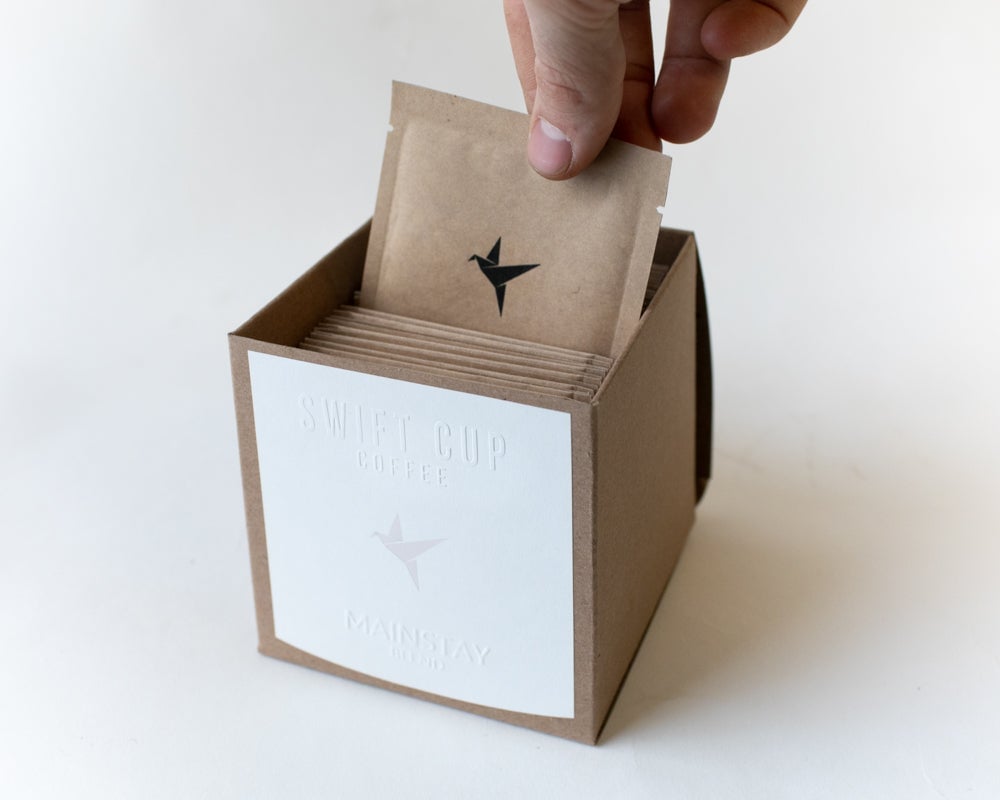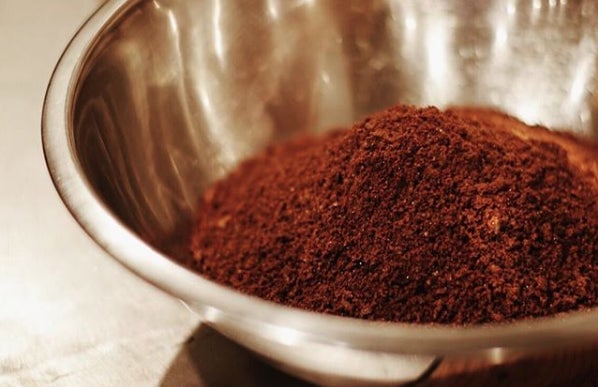A new wave of premium instant coffee is like having a café in your pocket
“Instant coffee has such a bad rep,” says Nate Kaiser, an entrepreneur in Pennsylvania. “It’s usually the worst-case scenario, or something your grandparents have. It’s never, never been thought of as a specialty product, and for good reason.”


“Instant coffee has such a bad rep,” says Nate Kaiser, an entrepreneur in Pennsylvania. “It’s usually the worst-case scenario, or something your grandparents have. It’s never, never been thought of as a specialty product, and for good reason.”
Curious about why it lacked the depth of flavor and nuance of the freshly ground beans he had come to love while working at third-wave coffee roasters, Kaiser started to research instant-coffee production. He discovered two things: The coffee typically used for instant is of very low quality, and the extraction process—the way the flavor is pulled from the beans—tends to be very harsh. He decided he could do better and started Swift Cup Coffee, one of a handful of companies around the US that are changing instant coffee’s bad reputation.
What Kaiser and others have found is that instant coffee, when produced with gentler extraction methods and from the high-quality beans that have become the hallmark of third-wave coffee roasters and cafés, can be exceptionally delicious. It’s not just a convenient way to carry around a nearly-ready-to-drink serving of coffee. Some roasters are choosing to put instant coffee on grocery and specialty store shelves instead of whole beans. It stays fresh nearly indefinitely, and isn’t subject to the sometimes extreme inconsistencies in flavor that different brewing and grinding methods can produce.
“There is the potential for instant coffee to not be gross,” says Jordan Michelman, co-founder of Sprudge, a coffee-obsessed media company. “It’s just the simple idea that instant coffee as we’re typically used to it is starting with source material that isn’t of the same high quality as what you might get at a café or a fancy coffee shop.”

In Portland, Maine, Will Pratt, the co-founder of Tandem Coffee, says that his company started selling instant versions of several of its whole bean varieties after he met Kaiser on a sourcing trip in Colombia. Kaiser brought along some packets of Swift Cup and Pratt immediately understood the appeal. “Right away I was pretty floored by the product,” he says. “He whipped out these things and then suddenly we’re having like, café level, wherever we were.” After the trip he contacted Kaiser to collaborate.
Now some customers who used to stock up on whole beans for their camping trips on Maine’s coast bring Tandem’s instant packets along instead. Instant coffee works on an airplane, around a campfire, or with the hot water tower at a gas station. Also, it beats toting a grinder and making a whole production out of brewing yourself a proper pour at your in-laws’ house.
Sealed and shipped
Pratt and his team roast the beans in Portland and ship them to Lancaster County, Pennsylvania, where Kaiser’s crew at Swift Cup turns pallets of freshly roasted beans into boxes of slim envelopes filled with rich, brown powder. Swift Cup has developed special hardware for its manufacturing process that grinds and brews freshly roasted beans very efficiently—what coffee professionals boast of as a “high extraction.” Once they’ve pulled as much flavor as possible out of the beans, the brewed coffee goes through several filtration steps to remove all solids that are not water soluble. That solution is frozen to -50°F (-46°C) or colder, then gently reheated, while under pressure in a vacuum, in a process known as sublimation. The water passes directly from ice to gas, skipping the liquid phase entirely, which leaves the aromatic compounds in the coffee intact.
The trays of freeze-dried coffee, which look like pans of brownies, says Kaiser, are then portioned out into packets, sealed, and shipped. To drink, you just open one, pour the powder into a cup, add water and stir.

Swift Cup processes coffee for roasters around the country and produces its own blends as well. And they’re not alone. Sudden, a San Francisco-based instant coffee company, scored a coveted spot in the Y Combinator accelerator program, and Voila, from Bend, Oregon, ran a successful Kickstarter campaign. Some third-wave coffee stalwarts, like Chicago’s Intelligentsia Coffee & Tea, have started selling instant versions of some of their beans, too.
A bit steep
Make no mistake, though, these are not cheaper versions. Depending on the origin of the beans and the producer, the new wave of instant coffee sells for $2 to $6 per serving. “It wouldn’t offer the cost-savings benefit of brewing at home,” says Michelman. “It’s more priced like having to get a cup in a café.”
Pratt says that the flavor of Tandem instant compares most closely to ordering an Americano at one of his cafés. He likes the guarantee of freshness the instant format, which lasts nearly indefinitely, provides. His experiments in selling whole beans to grocery and specialty stores did not always go as planned. “‘Oh, I bought your coffee and it was terrible,'” Pratt said he heard from customers who were purchasing whole bean coffee outside of his cafés. “Then I would say like, ‘When was it roasted?’ It would be like six months ago. We were just getting a lot of coffee that was being left on the shelves for a long time.”

When Whole Foods asked Pratt to send it whole bean samples for consideration for placement in their New England stores this summer, he sent a box of instant instead, with the freshness quandary in mind. “They were kind of annoyed when they opened the box, and then they tried it and they called us right away,” he said. Now it’s on the shelf all over New England.
Americans tend to drink a lot less instant coffee than the rest of the world, though they have a distinct love affair with the incredibly wasteful K-cup coffee pod. The appeal of instant coffee has been strongest in markets that traditionally drink tea—Asia, Russia, the UK.
Instant is an easy gateway to the coffee experience, without pre-requisite of new equipment for brewing. Kaiser sees Swift Cup as a way in for people who may be interested in the idea of single-origin, ethically-sourced beans, but who are intimidated by café culture, or by complicated brewing instructions. “What we celebrate within specialty coffee—these unique, exciting, lively flavors that coffee can offer—we’re just hoping to make them a little bit more accessible,” he says.
Pratt thinks of accessibility slightly differently. Instant coffee to him is like having a café on every corner, even in the middle of nowhere. “I compare it to a Swiss army knife,” he says. “You have it on you all the time, but there are days you don’t use it… When you do need it, it’s like, ‘Thank God I brought this.'”